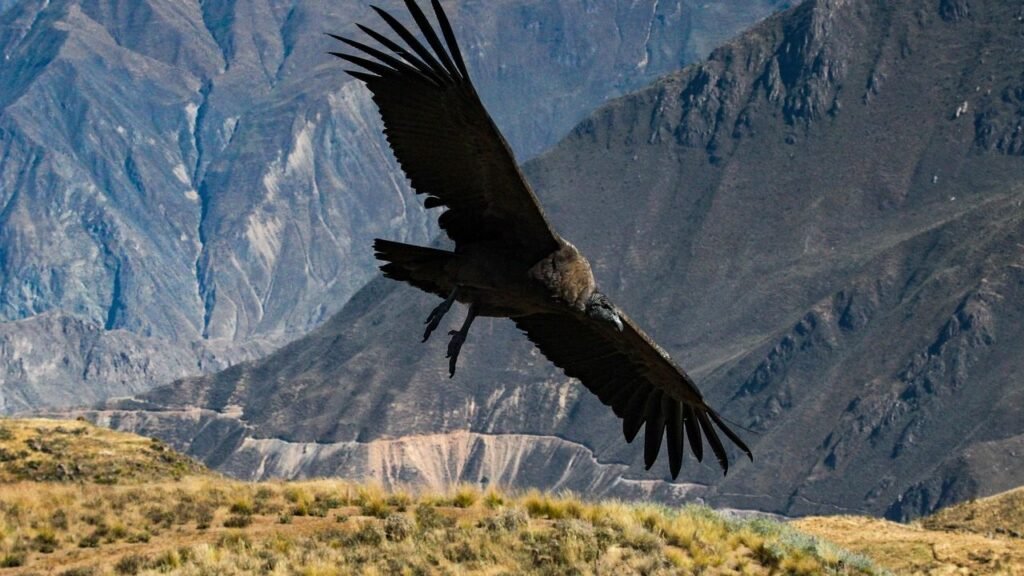Across America, spectacular cliff faces rise like ancient amphitheaters where nature’s most masterful aviators perform their aerial ballet. These towering rock walls don’t just serve as geological monuments – they’re essential highways for the nation’s largest flying scavengers. Picture hundreds of feet of sheer stone warmed by the sun, creating invisible columns of rising air that lift massive birds with wingspans approaching ten feet.
The relationship between these cliffs and soaring birds runs deeper than simple convenience. When wind strikes a cliff face, it deflects upward, creating powerful lift that allows enormous birds to gain altitude without burning precious energy. Combined with thermal currents – columns of warm air rising from sun-heated rock – these geological features become launching pads for some of the most spectacular wildlife viewing experiences in North America. From California’s coastal crags to Utah’s sandstone walls, these nine cliff systems represent the crown jewels of raptor habitat.
Big Sur’s Rugged Coastal Cliffs – Where Ocean Meets Sky
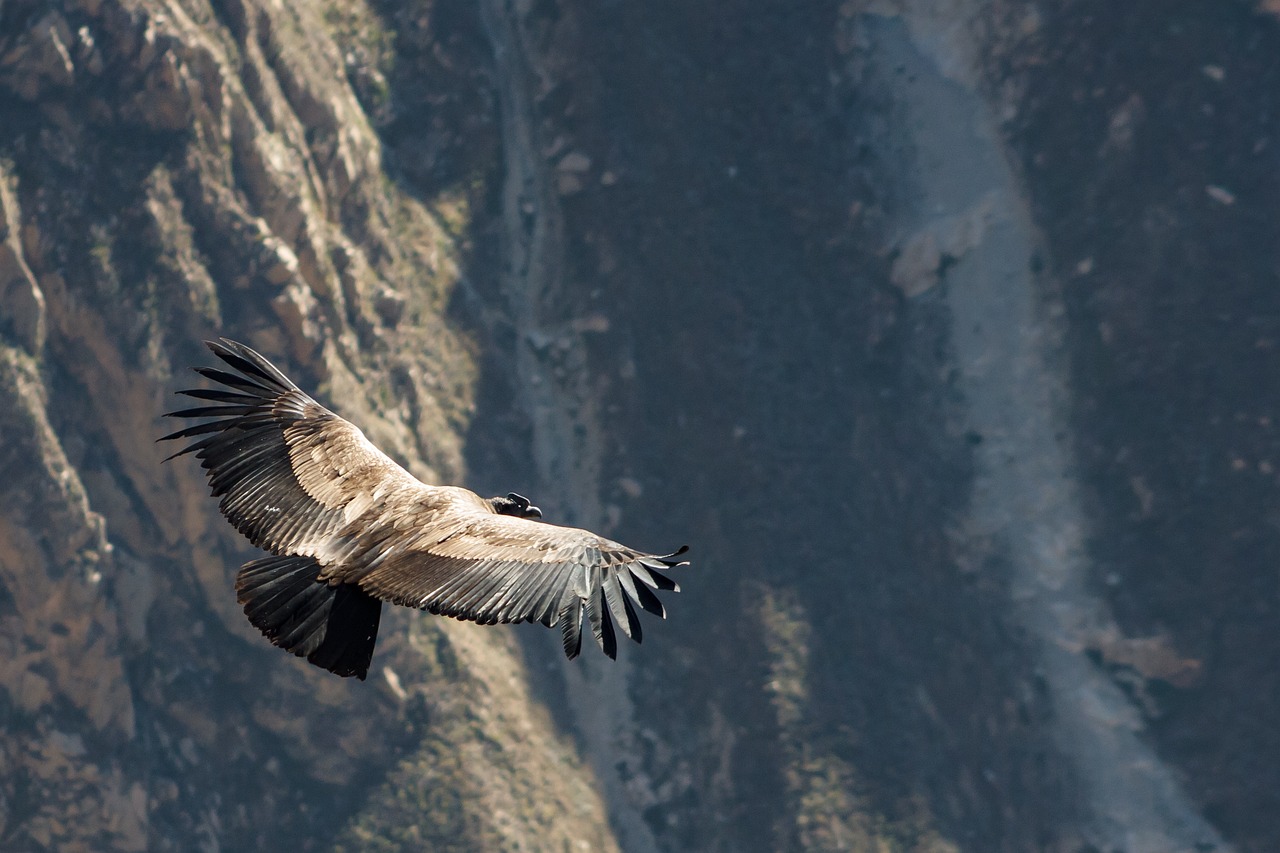
Big Sur is arguably the best place to view condors up close. The rugged cliffs along Highway 1 create the perfect thermals for soaring, and organizations like the Ventana Wildlife Society regularly release condors here. The dramatic meeting point between California’s mountains and the Pacific Ocean creates a unique microenvironment where land-heated air meets cooler ocean breezes.
These towering coastal precipices stretch for roughly ninety miles, offering an unparalleled theater for witnessing California condors in their element. Along Highway 1, look for these massive birds soaring above the cliffs. The interplay between marine air and heated inland surfaces creates consistent updrafts that make Big Sur a condor superhighway. Visitors often spot these prehistoric-looking giants with their distinctive white underwing patches catching morning thermals before embarking on journeys that can span hundreds of miles.
Grand Canyon South Rim – America’s Premier Condor Theater
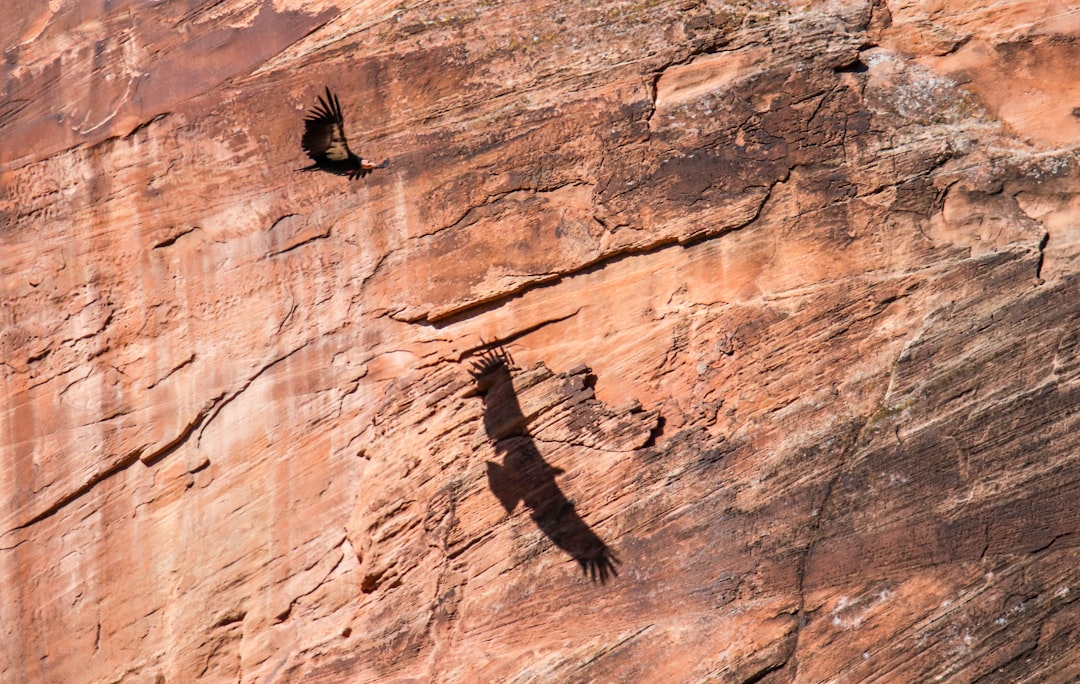
Good places to look for condors is along Bright Angel Trail, Yaki Point, Yavapai Point, and Lookout Studio. The Grand Canyon’s massive cliff system creates some of the most reliable thermal conditions in North America, making it a cornerstone of condor recovery efforts. Grand Canyon has proven to be a favorite nesting site with 5 different breeding pairs having successfully nested within park boundaries.
The canyon’s immense depth and varied rock surfaces create a complex system of rising air currents that change throughout the day. Keep your eyes peeled towards the sky, especially during early morning and late afternoon hours when these birds are most active. The thermal dynamics here are so consistent that condors have established regular flight patterns, often following predictable routes along the rim where visitors can position themselves for optimal viewing.
Vermilion Cliffs National Monument – The Condor Nursery
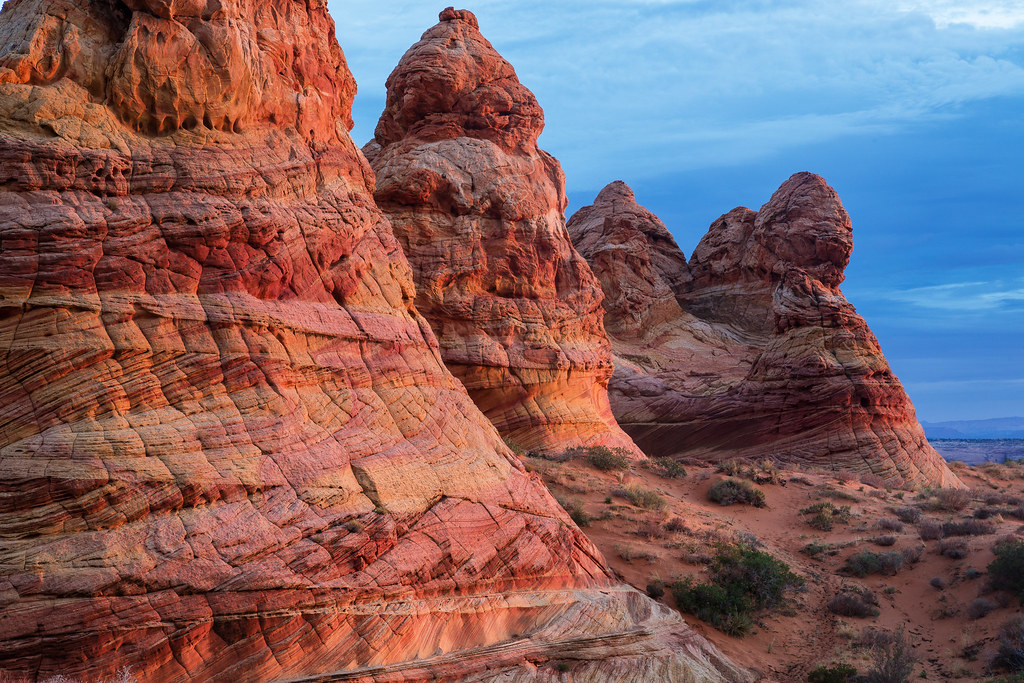
Vermilion Cliffs National Monument is a Bureau of Land Management National Monuments. The area is one of the release sites for the condors in Arizona. These striking red sandstone cliffs in northern Arizona serve as both nursery and graduation stage for newly released condors learning to navigate the wild. Or visit the Vermilion Cliffs to watch captive-bred condors released into the wild each September.
The cliffs’ distinctive layered geology creates multiple thermal zones that provide perfect training grounds for young condors mastering the art of soaring. A rare California Condor soaring near Navajo Bridge in Marble Canyon. If the conditions are right, these big birds will put on quite a show dive bombing in and around the bridge. The monument’s remote location and consistent wind patterns make it an ideal laboratory for condor behavior studies, where researchers can observe natural feeding, socializing, and flight training behaviors.
Pinnacles National Park – California’s Hidden Gem
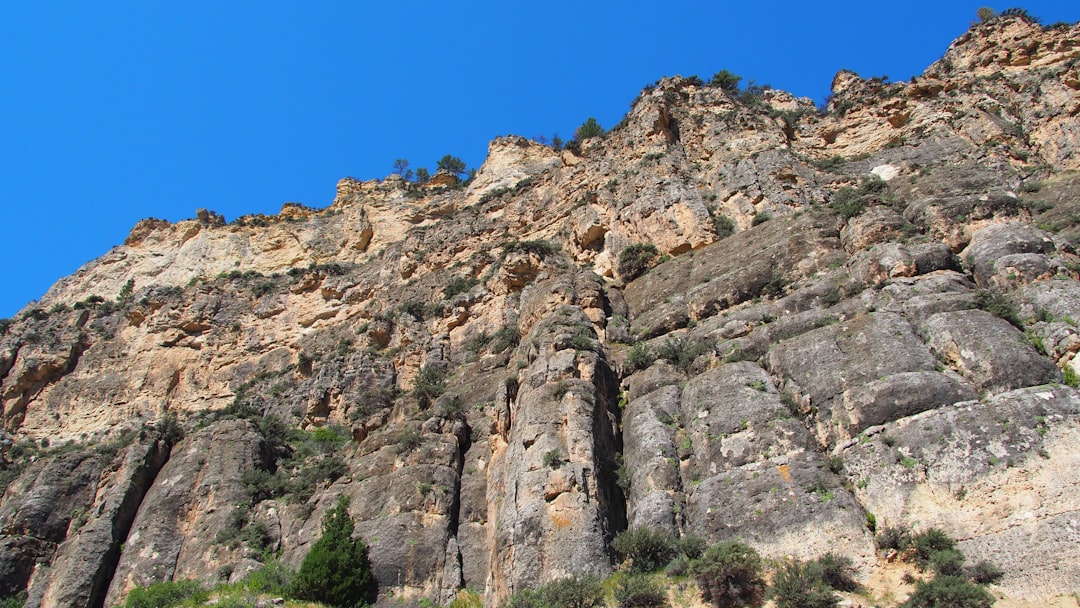
Pinnacles National Park – A major condor release site, this rugged landscape offers fantastic chances to see both condors and Turkey Vultures. This often-overlooked park east of Monterey features dramatic volcanic spires that create exceptional soaring conditions through their unique cliff formations. The soaring conditions created by the winds and terrain features, attract large raptors and scavenger birds alike. A variety of hawks, ravens, and vultures are common within PNP and are fairly easy for even the casual tourist to spot.
The park’s talus caves and rocky pinnacles form natural wind tunnels that concentrate thermal activity, making it a reliable spot for condor sightings. Located east of Monterey, Pinnacles is home to one of the most important California-based condor release sites. These ancient volcanic formations create microclimates where rising warm air meets cooler mountain breezes, producing the consistent lift conditions that large soaring birds require for efficient flight.
Zion National Park – Utah’s Condor Success Story
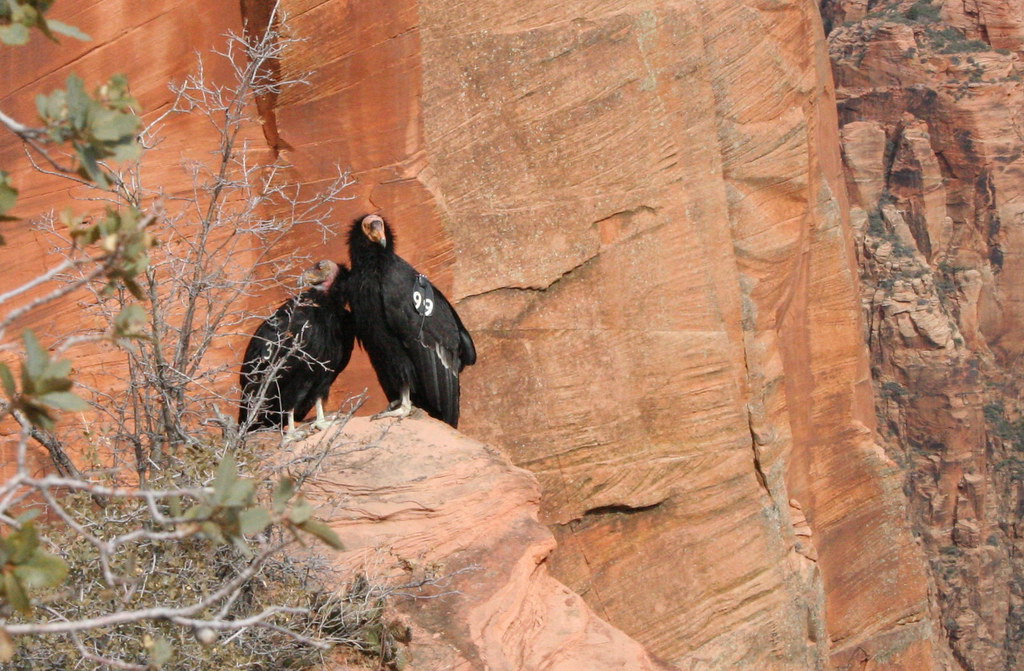
Zion’s sandstone cliffs and high plateaus have become a summer favorite for condors. The Kolob Canyons section and Angels Landing trail offer good vantage points, though patience is key. The park’s towering Navajo sandstone walls create powerful thermal columns that have attracted condors from neighboring Arizona populations. In 2019, #409 and #523 chose the spectacular Angel’s Landing as their nesting site. Their chick #1000 was a milestone chick. He was the 1000 chick born as part of the recovery plan and the first chick born in Zion in over 100 years.
Zion’s unique geology produces some of the most dramatic thermal conditions in the Southwest. The contrast between the deep, shaded canyons and sun-baked cliff tops creates powerful convection currents that can lift condors to extraordinary heights. Good places to look for condors are along Angels Landing, Observation Point, and anywhere under a condor closure. The park’s vertical sandstone walls act like natural chimneys, channeling warm air upward in concentrated columns that provide effortless lift for these massive birds.
Yosemite’s El Capitan – The Granite Giant
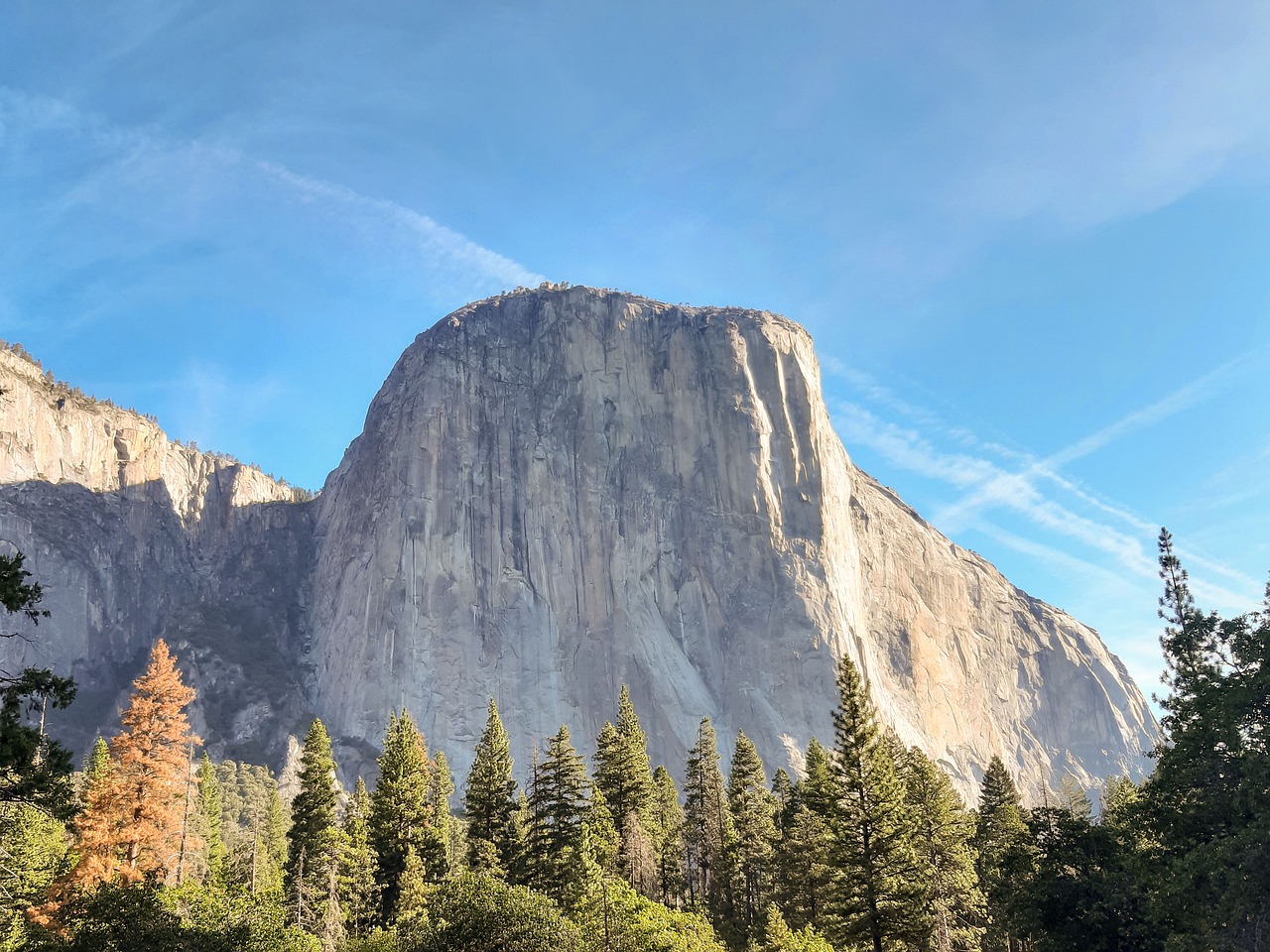
One of the world’s most popular climbing destinations, the sheer granite rock face of California’s El Capitan rises a sharp 3,000 feet from the valley floor of Yosemite National Park below. While primarily known for rock climbing, El Capitan’s massive granite face creates impressive thermal conditions that attract various soaring species. Visitors without a head for heights can experience breathtaking views of the cliff face, however, from the beautiful Bridalveil Falls waterfalls or the verdant El Capitan Meadow in Yosemite Valley.
The granite’s heat-retention properties make El Capitan particularly effective at generating strong thermals during sunny days. Though condors are less common here than at other locations, turkey vultures and various hawk species regularly demonstrate the cliff’s soaring potential. The monolithic nature of this rock face creates concentrated thermal columns that can lift birds to impressive heights with minimal energy expenditure.
Point Reyes Cliffs – Northern California’s Coastal Theater
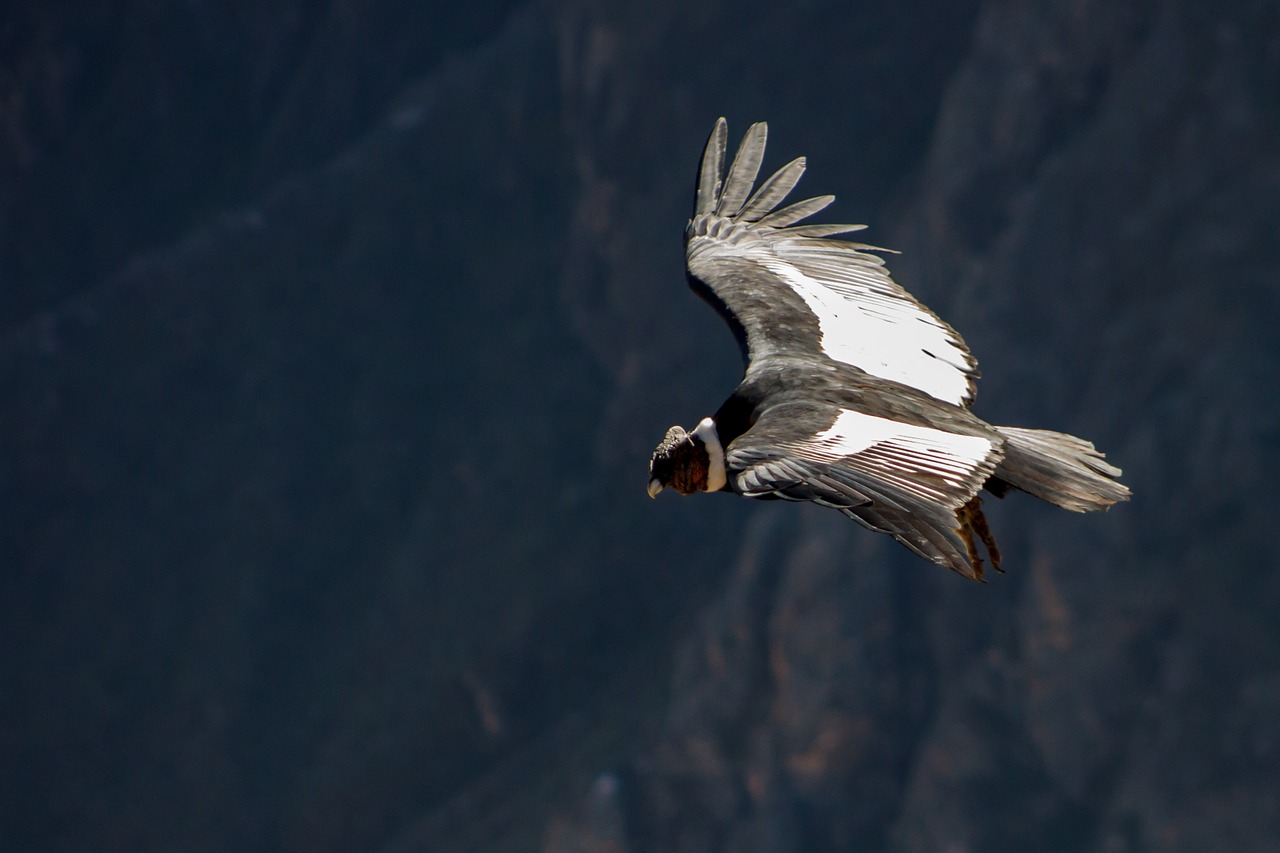
The dramatic coastal cliffs of Point Reyes National Seashore represent some of California’s most spectacular meeting points between land and sea. These towering precipices create powerful updrafts where Pacific winds meet the heated California coastland, producing ideal conditions for soaring birds of all sizes. Turkey vultures are particularly common here, utilizing the consistent coastal thermals for efficient travel along the shoreline.
The area’s unique position jutting into the Pacific Ocean creates a natural concentration point for thermal activity. Marine layer interactions with the warm inland air masses produce reliable lifting conditions that have supported diverse raptor populations for millennia. While condors are occasional visitors, the cliffs regularly host an impressive variety of soaring species that demonstrate the area’s exceptional aerial dynamics.
Palisades of the Hudson – Eastern Soaring Sanctuary

These rising winds can be created by a variety of obstacles including hills and cliffs, groups of buildings, groves of trees, or a large ocean wave. If the wind is strong enough, the deflected air may rise tens or even hundreds of feet in altitude. The Palisades along New York’s Hudson River represent some of the East Coast’s most impressive cliff-soaring habitat. These basalt cliffs create consistent updrafts that support various raptor species, particularly during migration seasons.
Birding enthusiasts also visit the Cliff Trail to watch birds soaring over the river valley, migrating above the wooded valley and pastoral cornfields or just playing on the thermals. The river’s moderating effect on local temperatures, combined with the cliffs’ southern exposure, creates reliable thermal conditions throughout much of the year. While turkey vultures are the primary large soaring species here, the area demonstrates how cliff-generated thermals support raptor populations even in densely populated regions.
Devil’s Tower – Wyoming’s Monolithic Marvel
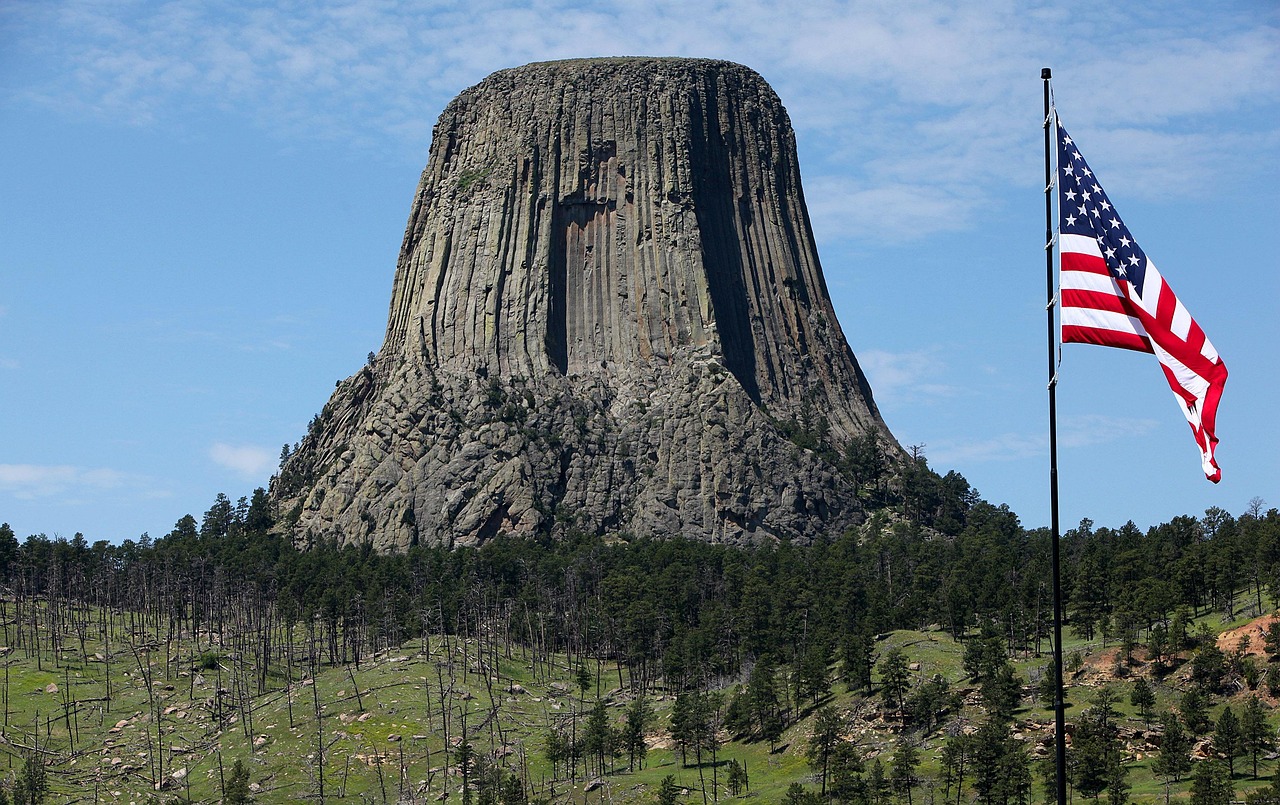
Wyoming’s Devil’s Tower rises like a prehistoric monument from the surrounding plains, its unique columnar basalt structure creating distinctive thermal characteristics. This ancient volcanic neck generates powerful updrafts as prairie winds encounter its vertical faces, creating ideal conditions for various soaring species. The tower’s isolated position makes it a natural landmark and thermal generator visible for miles across the Wyoming landscape.
The contrast between the dark volcanic rock and surrounding grasslands creates significant temperature differentials that drive strong convection currents. Turkey vultures and red-tailed hawks regularly exploit these thermals, demonstrating the tower’s effectiveness as a natural thermal generator. The site’s cultural significance to Native American tribes adds depth to its role as both geological wonder and wildlife habitat, representing the ancient relationship between sacred places and the creatures that soar above them.
Conclusion

These nine remarkable cliff systems represent more than geological formations – they’re life-support systems for America’s most magnificent soaring birds. From the coastal drama of Big Sur to the desert grandeur of the Grand Canyon, each location tells a unique story of how geology, meteorology, and biology intersect to create perfect conditions for effortless flight. The recovery of California condors at many of these sites proves that with proper conservation efforts, even the rarest species can reclaim their ancient sky highways.
These cliffs remind us that the natural world operates on scales both grand and intimate, where massive rock faces become stepping stones for creatures that embody millions of years of evolutionary perfection. What do you think about witnessing these aerial giants in their natural theater? Tell us in the comments.

